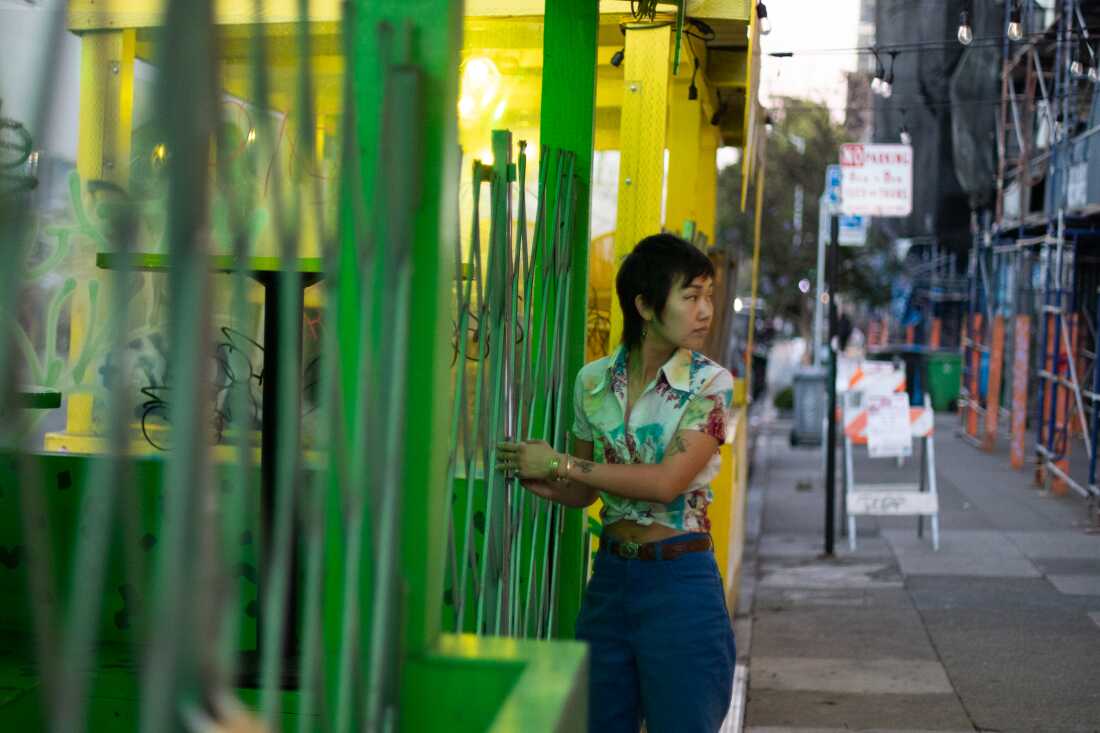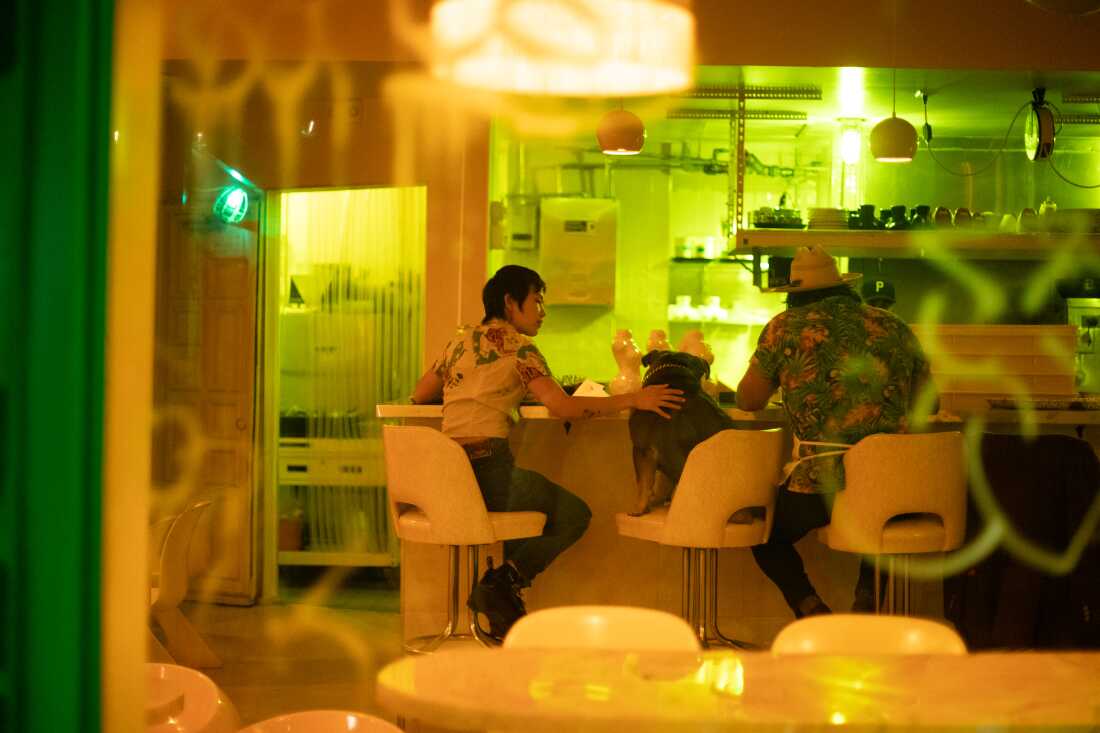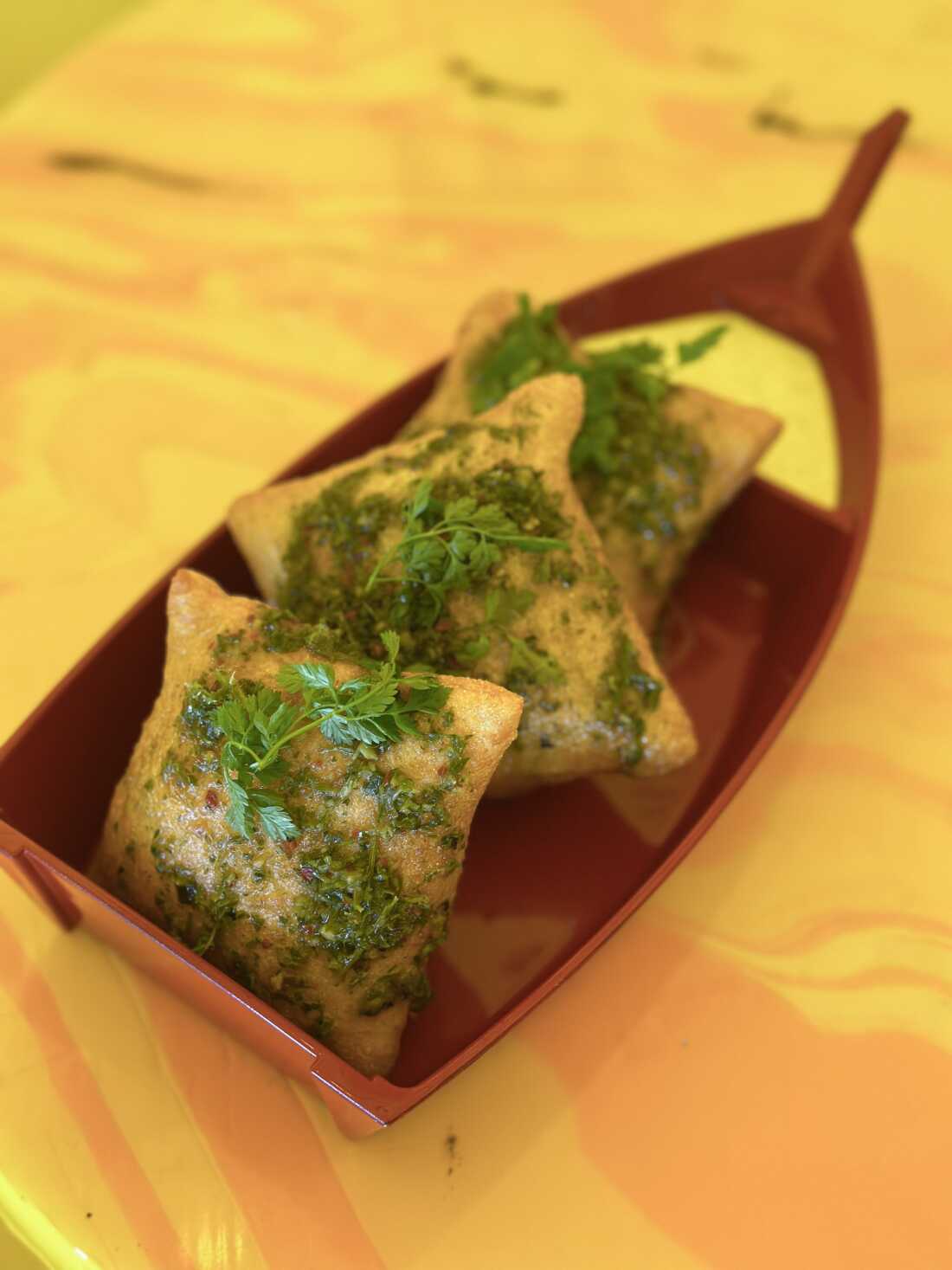A restaurant has a way to combat food waste: making food from 'garbage'
Kayla Abe (pictured here) and her partner, chef David Murphy, co-founded Shuggie's Trash Pie in 2022 to address the global problem of food waste. According to food waste reduction nonprofit ReFED, 38% of the US food supply goes uneaten.
Ryan Kelman/NPR
Hide caption
Toggle captions
Ryan Kelman/NPR
Climate change is affecting our food, and our food is affecting the climate. NPR is dedicating a week Stories and conversations About searching for solutions.
No one, except maybe Sesame StreetIts Oscar the Grouch, wants to eat food that most people consider junk.
But if everyone ate fare that might otherwise be thrown away — say, exotic animal parts or milk that's close to its sell-by date — we'd significantly reduce the effects of human-caused climate change.
“Tackling food waste has become one of the biggest climate solutions of them all,” said climate scientist Jonathan Foley, who serves as executive director of the climate solutions think tank Project Drawdown.
According to food waste reduction nonprofit ReFED, 38% of the US food supply goes uneaten.
All the processes involved in food production, from clearing land and raising livestock to packaging and cooking ingredients, contribute one-third of the world's global warming pollution. Food waste rotting in landfills is particularly problematic.
“It also releases methane into the atmosphere, and it's a really powerful greenhouse gas,” Foley said.
Methane traps more heat than carbon dioxide, causing global warming. An estimated 60% of methane emissions are human-caused and come mainly from agriculture, fossil fuels and food waste decomposing in landfills.
Restaurants are best positioned to help solve this problem.

David Murphy, chef and co-owner of Shuggie's Trash Pie in San Francisco, a restaurant that focuses on underutilized and up-cycled ingredients, previously worked in upscale restaurants. “We have always demanded the best. The most perfect little Brussels sprouts,” he says.
Ryan Kelman/NPR
Hide caption
Toggle captions
Ryan Kelman/NPR
According to research by the US Department of Agriculture, people in this country are spending more eating out than staying at home, and the restaurant industry was responsible for nearly 10 million tons of leftover food in 2022, according to 2022 Refed data.
Restaurants can make practical changes, such as reducing or customizing portion sizes. “It's a big issue,” said Ronnie Neff, an associate professor at the Johns Hopkins Bloomberg School of Public Health who studies food systems and waste. “Seventy percent of the food wasted in restaurants happens after it's served to people's plates.”
Neff says restaurants can streamline their ordering processes so that surplus food isn't sitting around. And then there are the chefs.
“They can help shape people's attitudes, expand our understanding of what good food is. And they can change behavior in more subtle ways,” he said.

Shugi's co-owners David Murphy and Kayla Abe met at a farmer's market in downtown San Francisco. They came together out of a desire to help local farmers who were having trouble selling their surplus produce. Pictured right, Abbey and Murphy's dog, Beef.
Ryan Kelman/NPR
Hide caption
Toggle captions
Ryan Kelman/NPR
That's where restaurants like Shuggy's Trash Pie come in
Founded in 2022 by chef David Murphy and his partner Kayla Abe, the San Francisco “climate solution restaurant” works to comfort diners with imperfect ingredients typically discarded by the food system. According to Abe, Shuggy's has saved 41,000 pounds of food waste from trash cans in the nearly 2 1/2 years since opening.
“Our big goal is to change the way America eats,” Abe said. “And mainstream the idea that eating junk is cool.”

Shugi's menu features dishes made with imperfect and surplus ingredients — often sourced from local farmers who have too much of a particular product to sell, or a product that's past its prime. “I was constantly talking to them about their problems,” Abe said of his conversations with farmers. “And food waste was a recurring one.”
Ryan Kelman/NPR
Hide caption
Toggle captions
Ryan Kelman/NPR
Like several other sustainability-focused restaurants and chains in the U.S. (such as Emmer & Rye Hospitality Group in Austin and San Antonio, Texas, and Lighthouse in Brooklyn, New York), Shugi's sources food that local producers cannot sell because there is a surplus, appearing erratic. Or is it his main past.
“We don't dumpster dive,” Murphy said. “It's not something we do.”

Shuggie's co-owner Kayla Abe is ready for the time off. Before co-founding Shuggie's with partner David Murphy in 2022, Kayla Abe worked for a farmer's market operator in San Francisco's Ferry Building. “The more we can grow this movement, the more we can actually start to make big changes,” he said of a restaurant advocating for food waste reduction.
Ryan Kelman/NPR
Hide caption
Toggle captions
Ryan Kelman/NPR
Instead, Murphy and Abe have developed strong relationships with local produce farmers as well as fish and meat distributors.
“Looking at ugly food or imperfect food, that it doesn't have to be the best of everything, is a relatively new way for people to look at their food,” said Jordan Bowe, founder of distributor Royal Hawaiian. Seafood, and Shugi's main seafood sources are often discarded fish parts such as halibut cheeks and various types of bycatch. “I'm counting on chefs to be creative and not do what everyone else does.”
It's going to take many more restaurants to do this, as well as a broader cultural shift among consumers, which is really going to put a dent in the massive food waste problem. This is true for both eating out and eating at home. And if that change happens, it could mean less food waste in landfills and less global-warming pollution, making reducing food waste a huge climate solution.

Abe and Murphy work long hours at Shugi's. Preparing ingredients that aren't perfect to restaurant standards creates extra work and margins are tight. Convincing consumers to pay restaurant prices for what they perceive to be waste can be challenging. After closing in for the night, Abe and Murphy, along with their dog Biff, sit down for a meal.
Ryan Kelman/NPR
Hide caption
Toggle captions
Ryan Kelman/NPR
There are easy ways to use up leftovers in your refrigerator. To help you get started, NPR asked Chef Murphy of Shuggie's to share some ideas. Below you'll find three of her creative yet simple recipes that typically use leftover items.
Carrot Top Chimichurri
Chef's Note: “This sauce is the base of many of our dishes. For example, it becomes a pesto after we add cheese and nuts to it.”
Materials
2 cups carrot tops or beet tops, or frozen wilted greens
3 cloves garlic, minced
2 tablespoons vinegar (prefers apple cider)
1 cup extra virgin olive oil or grapeseed oil
1½ tablespoons chili flakes
Salt, to taste
method
In a blender, blend all ingredients together for 30 seconds or until all leaves are well blended.
Season with salt.
So good you'll want to use this Chime on everything!

Chef David Murphy's Carrot Top Chimichurri Sauce, featured here on Shuggy's Pizza Puffs.
Kayla Abe
Hide caption
Toggle captions
Kayla Abe
Shuggie's Dream Beans
Chef's Notes: “Use this healthy bean dish as a dumpster for all sorts of leftovers sitting in the fridge. I added squid, octopus, assorted vegetables, tired greens, fennel … anything!”
Materials
3 cups great northern beans, soaked, cooked in a flavorful vegetable stock. (You can sub with cannellini, gigante, or your favorite soup beans.)
Half a cup of chopped garlic
Sun-dried tomatoes in ½ cup oil, chopped
1 tin Spanish anchovies in oil
1 cup herb stalks, chopped
4 cups wilted greens (kale, collards, arugula, or anything left in a crisper), cut into 1-inch pieces
1 stick dry-cured Spanish chorizo, cut into ⅛-inch cubes
4 quarts flavored vegetable or chicken stock
3 tablespoons smoked paprika
1 teaspoon pepper
2 tablespoons black pepper
1 large yellow onion, medium diced
method
Cook until beans are tender, strain.
In another pot with a little grape seed oil, cook all the vegetables and chorizo, deglaze with stock, add dried spices, anchovies and dried tomatoes.
Add salt to taste.
Ladle into bowls, top with croutons made from day-old bread, and top with carrot tops!

Shuggie's Dream Beans
Kayla Abe
Hide caption
Toggle captions
Kayla Abe
Ricotta Fluff
Chef's note: “Drop this creamy topping on waffles, or add it in place of mozzarella on your favorite pizza… super sexy!”
Materials
1 gallon of milk (near or even past its expiration date!)
¼ cup white vinegar
2 cups heavy cream
Salt to taste
Honey or other sweetener of your choice
method
Whip heavy cream to soft peaks.
Heat the milk on low heat.
Pour in the vinegar, stir gently, then strain.
Allow the curd to cool.
Fold in heavy cream and season with salt.
Spread mixture on toasted bread with olive oil.
Sweet in taste.

Ricotta fluff sits atop Shuggy's Garlic Nuts with a dash of carrot top. Fluff can also be used in desserts.
Kayla Abe
Hide caption
Toggle captions
Kayla Abe
Audio and digital stories edited by Jennifer Vanasco And Sadie Babbitts. Mix the audio story Isabella Gomez-Sarmiento.
